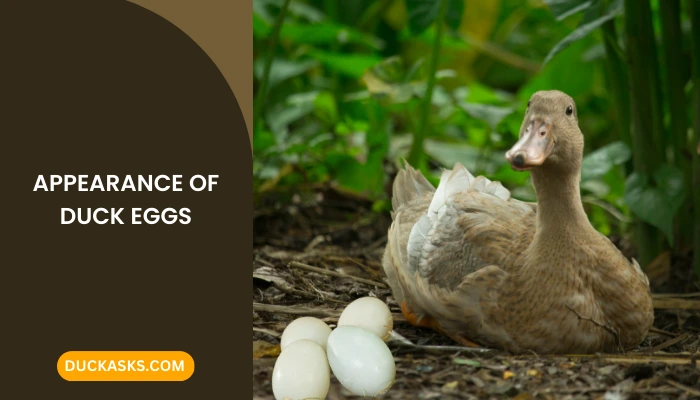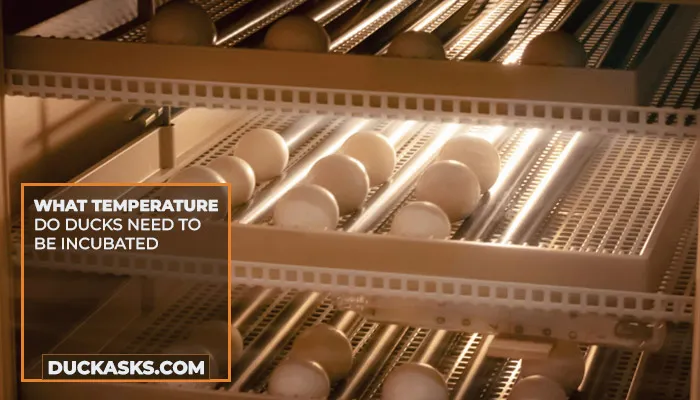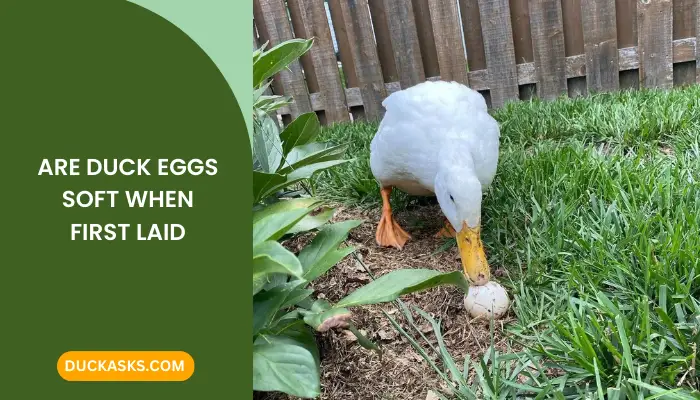Are All Duck Eggs Fertilized?
The procreative fashion of ducks is unique, as well as their copulation nature thus it can be hard to comprehend the anatomy of duck eggs. It can also lead you to ponder, are All Duck Eggs Fertilized?
Well, let me break it down for you. Just like human females, who have their menstrual cycle with unfertilized eggs, ducks also bear unfertilized eggs, and they will lay them regularly. But to be fertilized, a male duck (called drake, not the singer, though) and his sperm is obligatory.
So long story short – no, all duck eggs are not fertilized. And you don’t have to fret over this matter as unfertilized eggs are yet worthy of selling and eating. Below, I have answered some of the most frequent questions asked by novice duck enthusiasts so that you can also clear up all your confusion.
Related blog about duck breeding:
Why Are Duck Eggs Not Always Fertilized?
Duck eggs aren’t always fertilized because, surprisingly, ducks have the utmost control over the fertility of their eggs.
Didn’t understand? Well, when a drake approaches a duck for fornication and the duck doesn’t feel attracted or doesn’t want to reciprocate, the drake will most definitely assert dominance and force the duck to mate with him.

Due to this aggression and forced behavior, ducks are often hurt; however, the duck can position its body in a way where the sperm won’t penetrate her as the penis doesn’t get inside properly. I know it sounds crazy, but that’s what makes ducks superior.
Forced Mating
For the records, a drake’s genital is shaped like a corkscrew, while the duck’s vaginal tract is shaped exactly opposite to a corkscrew. This means their organs don’t align like us humans, and it makes the whole copulating process tricky.
Say the female participant isn’t consenting to sex, then the mating session becomes even more difficult as the male struggles to penetrate its penis. On top of that, an unwilling duck will definitely throw a fit to stop this assault which makes breeding almost impossible.
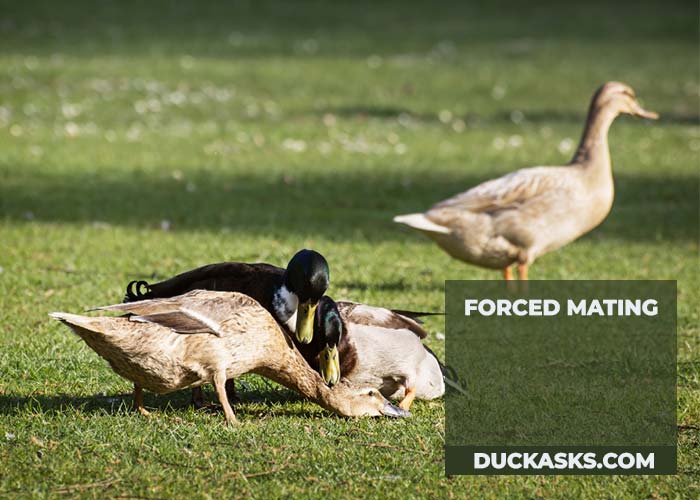
In case you don’t know, about one-third of all duck breeding events are forced. But the plot twist here is ducks aren’t forced to lay their assaulter’s eggs. The fertilization depends on the male for sure, but for it to be fertilized, a female’s consent is paramount.
Hence, duck egg fertilization is a broad and complex topic to discuss. If you have a farm where two drakes and four ducks are dwelling together, and you want them to mate for fertilized eggs, then you better be sure that the ducks are willing to mate.
How Do Ducks Lay Fertilized Eggs?
Well, ducks reproduce through the act of internal fertilization. This happens when the male duck shoves his penis into the female’s oviduct. The sperm will then be traveled from his testes to her oviduct, where the egg fertilization will take place.
When the sperm oozes inside the eggs, the egg will become fertilized, and that’s how the duck will lay fertilized eggs.
Fertile eggs will remain viable for about 7 days once being laid. After that, fertility starts to downturn; thus, it’s advised not to delay too long.
Crew (1926) and Dunn (1927) reported that fertilized eggs may be expected within 48 hours just after mating but not sooner than 21 hours.
How Do You Tell the Difference Between Fertilized and Unfertilized Duck Eggs?
It can be tricky to discriminate the fertile eggs from the unfertile ones as they look alike from the outside.
Also, you can’t really tell if the ducks were forced into fornication or not, as it’s quite impossible to always keep an eye on them when they are mating. However, there are three classic methods to determine the egg’s fertility. Let’s check them out!
Method One: Candling
This method is one of the most effective among others and is the most reliable one. What you must do here is to light up a candle and hold its blazing, shining flame in front of the egg to investigate the internal condition.
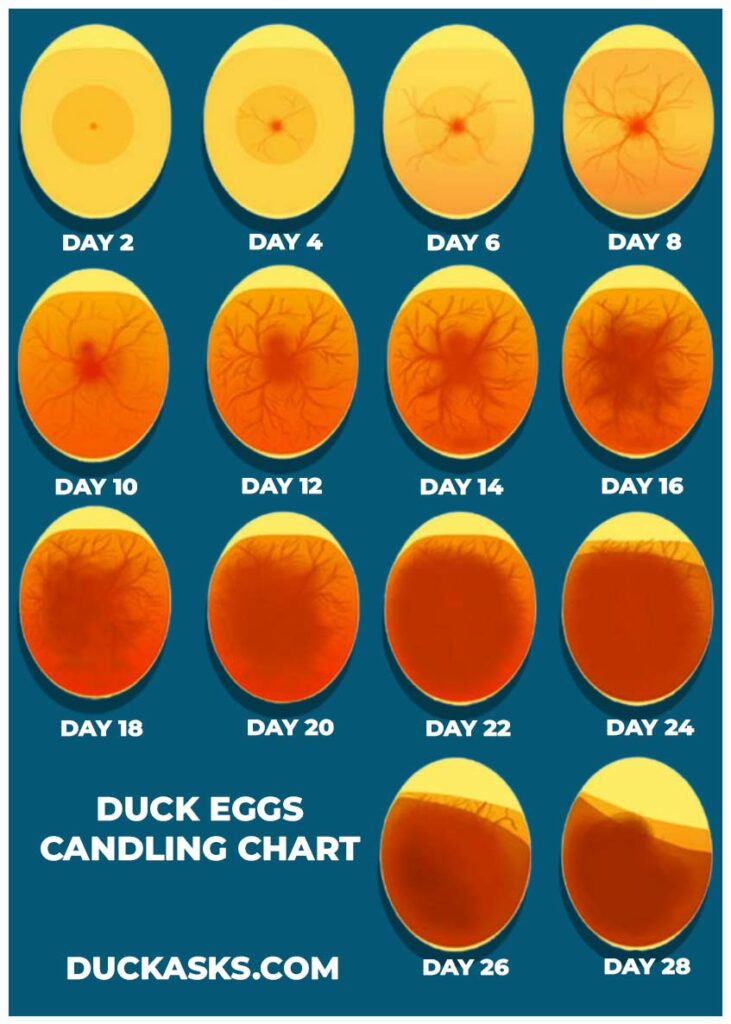
Scenario One: Now, if you are holding the candle near a fertile egg, you can encounter a white circle that appears during the egg yolk; you can also witness a dark spot with spider-like veins expanding like tentacles; this happens after 7 days of fertilization.
Scenario Two: Besides, if you candle a fertilized egg after two or three weeks, then you will notice that the spider-like dark spot is growing and pouring the egg. You can also see the red blood vessels, an indication of life (embryo) developing its size and becoming more pronounced.
Scenario Three: On the flip side, if you notice only the shadow of the yellow yolk while candling, without any hint of a white circle, dark spot, or veins, then it’s a non-fertile egg or a clear egg.
Distinguishing Dead Embryos: You can also determine dead embryos through the candling method. In case you don’t know about embryos, deaths are common in ducks and can happen at any time during the incubation process.
If an embryo dies in the first few days and you hold a candle near it, you will notice a thin ring around the inside of the egg.
These early embryo deaths or deaths within the first week are known as quitters. Although the embryo will still be visible, the appearance won’t be the same as the alive ones. It will appear cloudy and circle around if you rotate the egg.
Method 2: Inspect the Germinal Spot
If you aren’t expecting the duck eggs to hatch, then you can proceed with this method without a doubt. Here you must crack open the egg (this is where you kill the possibility of hatching).
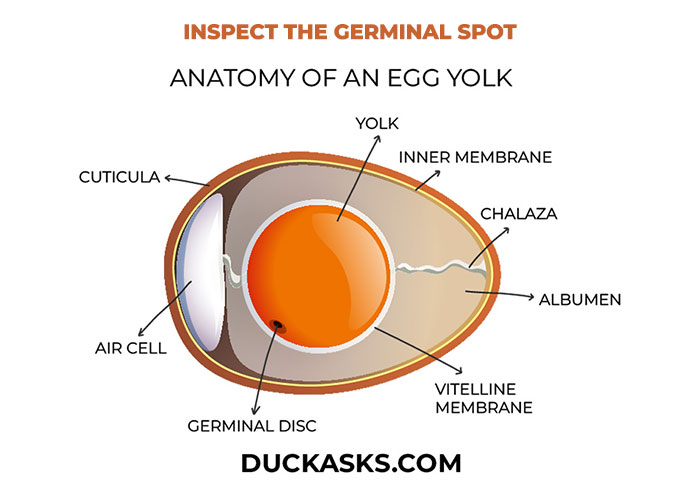
Take a frying pan, use the shaft of a spoon, and tap it gently but firmly on the egg so it breaks without making a mess. Now look for the egg’s germ spot. If you don’t know what the germ spot looks like, then here’s a picture:
Now, infertile eggs will look like a small and solid white patch, whereas fertile eggs will have a wider germinal spot, resembling a bullseye design.
Method 3: Float Test
This method is obsolete and can be fatal as submerging the baby ducks can make them drown and die. However, there are people who vouch for this method and its efficacy.
So just for the sake of it, I am sharing it here.
In this method, you must pour a pot or a container with lukewarm water. Make sure the water is deep enough to soak the egg entirely. Leave a couple of centimeters of excess water.
Now, ensure that the temperature is around 95-100F, and once the water stops sending ripples, it’s time for the egg placement.
Scenario One: If the egg is infertile, then it will sink to the bottom and won’t move. And it also means the egg was infertile from the get-go.
Scenario Two: On the other hand, if the egg doesn’t sink, then observe its floating pattern. When the narrow edge of the egg is pointing down straight and is immobile, then the egg may bear a dead embryo.
Scenario Three: In contrast, if the egg is floating at a horizontal posture, then it’s possible that the hatchling is still alive.
In addition, if you notice the egg bobbing around voluntarily, lo and behold, there’s a baby duck lying inside, WAITING TO HATCH.
This also answers your question that your duck lays a fertile egg and is willing to hatch. Now, remove the egg from the container, dry it off and relocate it to the incubator.
Note: By day 26 or 27 you can certainly tell if the egg is fertilized or not.
Can You Eat Fertilized Duck Eggs?
You can consume duck eggs regardless of their condition, fertilized or unfertilized. In fact, the nutritious value and taste are also the same between fertile and infertile eggs, so it doesn’t matter if you are eating fertilized duck eggs or non-fertilized duck eggs. It’s all quite the same when it comes to consumption.
End Quote
So, the answer to “are all duck eggs fertilized?” is a big no.
To conclude, not all duck eggs are fertilized. Fertile eggs are those that have been fertilized by a male duck’s sperm, resulting in the development of an embryo inside the egg.
Unfertilized eggs, on the other hand, do not contain any embryo and will not hatch into ducklings.
Whether or not a duck egg is fertilized depends on whether the female duck has been in contact with a male duck or has been incubated. Also, the female duck shouldn’t be showing any resistance to mate if she wants to bear the male’s baby.
Article References:
Image Credits:

